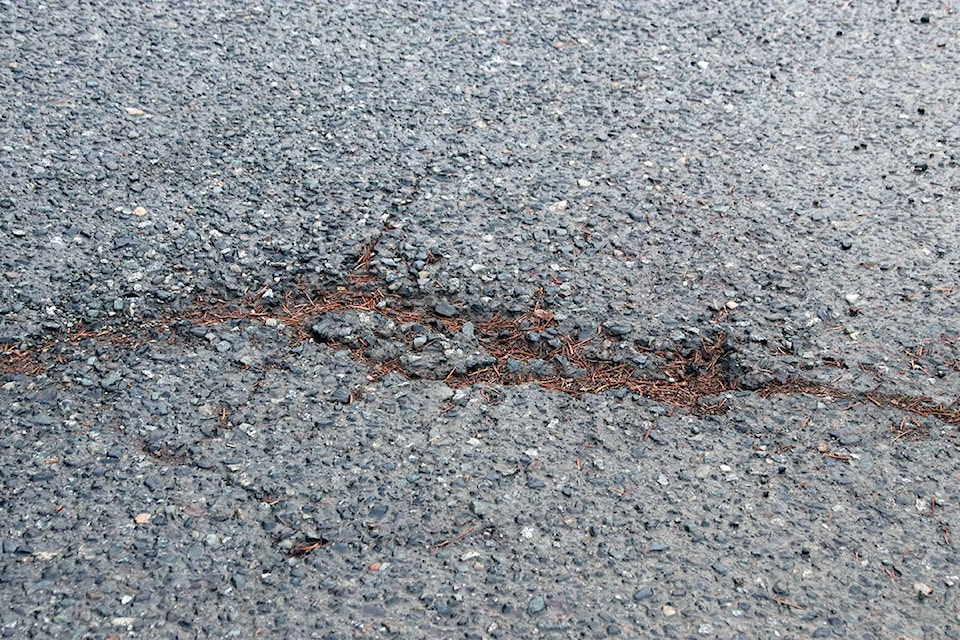Lake Cowichan’s roads are deteriorating and town council must come up with a systematic plan soon or the problem could become really expensive to fix, according to works superintendent Kam So.
It’s all part of asset management, he said at the Nov. 19 council public works and services (PWS) meeting.
“A well-maintained road network is vital to the movement of people to connect us with our neighbors and to facilitate the movement of goods to support the economy. Due to a variety of reasons such as weather conditions, amount of traffic and types of traffic, roads will eventually deteriorate and will need repair.”
There are generally three types of road maintenance:
Preventive maintenance: work done in the first five years to extend the life of pavements such as patching, joint sealing/ crack sealing, done by the PWS crew, will extend the life of roads, he said.
Resurfacing: a fresh layer of asphalt applied to the surface of the road to restore its structural integrity, can extend a pavement’s life span 10-15 years, preventing the need for costly reconstruction work.
Reconstruction: required when an overlay is not possible anymore. Construction costs are very expensive and there could be service disruptions. Reconstruction is required as the pavement has deteriorated to the point where the sub-base must be removed and replaced.
“A proper pavement management system should not allow pavement to reach this stage,” So said. “With a good road management strategy, roads should be consistently maintained by preventative maintenance and then an overlay every 10-15 years. The timing of the overlay should prevent any need for an expensive reconstruction.”
He suggested all roads in Lake Cowichan be rated from 10 (perfect) to 1 (very poor).
When the pavement reaches 6-7, a surface overlay should be considered and conducted but councillors have to remember “deterioration of pavement is not linear. For the first few years the pavement will show signs of deterioration very slowly, even slower with regular preventive maintenance. But, there is a trigger point in time where either an overlay should happen, or the pavement will significantly drop in condition.”
Larger jurisdictions have a database that manages roadway inventory and condition assessments but for a town with a small inventory, a complicated list is not necessary, he said.
The bad news is that “many of the roads in town are approaching a condition [where] resurfacing may not be possible anymore and a reconstruction is required.”
A resurfacing strategy must include a careful look at different classes of roads that would have different Level of Services (LOS), he said.
They would be ranked:
• arterial roads like North Shore Road would have the most traffic and heavier vehicles
• collector roads like Coronation Street would have medium traffic, with residential vehicles
• local roads like Nelson Road would have low traffic
Resurfacing of arterial roads would be prioritized over collector and local roads with condition also being a factor.
“Roads are deteriorating and we must start overlaying some roads before they reach the point of reconstruction. Depending on budget and funding, we should start conducting resurfacing road projects each year,” So said.
Even before they get into a thorough discussion, councillors said that Indian Road needs resurfacing and there are problems on River Road that need addressing. In the 100 Houses, there also could be the added cost of having to re-do underground services.
Town CAO Joe Fernandez said, “It’ll be a costly process,” but agreed that compiling a priority list would help councillors with budgeting.
lexi.bainas@cowichanvalleycitizen.com
Like us on Facebook and follow us on Twitter
